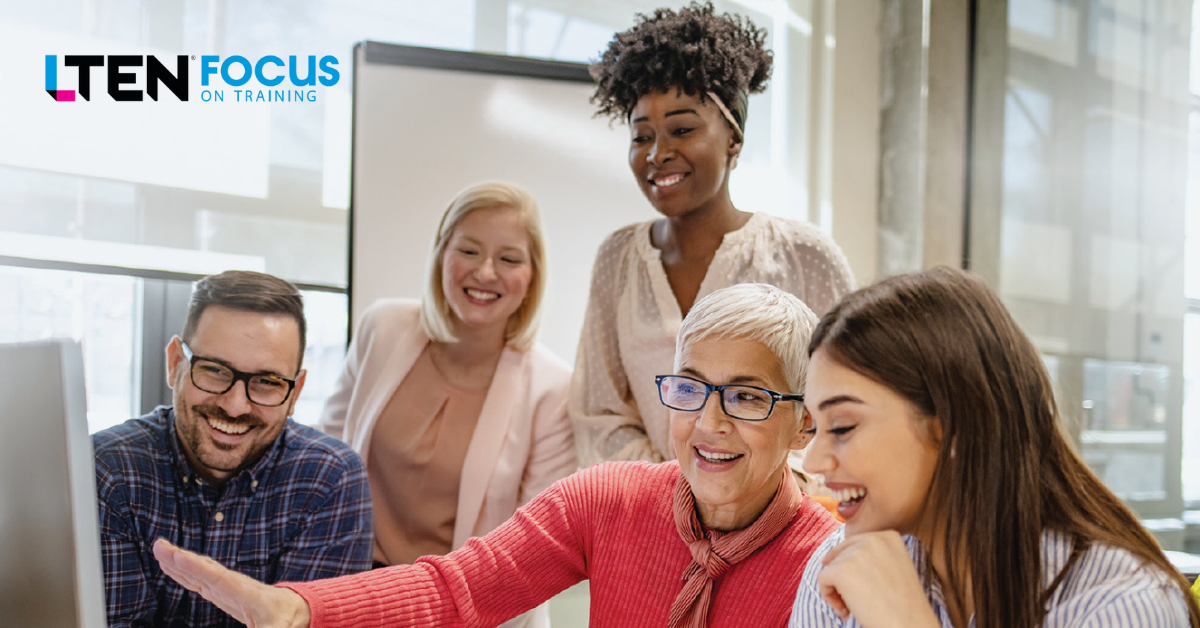
Professional Development – By Marcello Rinaldi
We owe it to ourselves and others to relentlessly progress
As a learning leader, one commitment I have made to myself, to the organization and people I support and to my team members is to develop myself, based on the latest research, science and updates in the learning space.
What we know about how people learn constantly evolves. We operate in an industry that is plagued by persistent myths not proved (or even disproved) by science — like the infamous “learning styles” — and we owe it to ourselves and our profession to relentlessly progress on our education.
Relying on a strong foundation of learning theories, performance consulting, workplace learning and the latest updates in adult pedagogy and neuroscience is not optional in our profession. Still, I observe the casual “name drop” of unproven concepts in too many L&D conversations.
Because science progresses over time, what we believe to be true today may not be correct tomorrow. Which means that as learning professionals we cannot stop studying and learning about how the brain works, how people learn and how workplace learning should evolve.
Learning Partners
One learning expert I follow, Lauren Waldman, summarizes it well when she says, “Why work against your brain, when you can join forces with it?” Indeed, relying on the latest updates of what we know about how our brain works, it’s a must for us in this profession.
One more point, related to this: very few of us have been taught how to learn. We’ve been part of an education system that is more geared toward acquiring social norms (e.g., sit down, listen when the teacher speaks) rather than learning. Therefore, we bring those assumptions to the workplace (e.g., we expect to sit down in a formal training, or passively listen during a Zoom session).
Back in the ‘80s, when I was a kid, there was this company — I am sure there were many — that pitched to parents of school-age children a course on memorization techniques. They used some tricks to close the sale. I cannot speak about the quality of what they were selling back then, but it is evident that they were covering a huge gap in the education system: teaching how to learn.
This is still true today. And, as L&D professionals, we cannot underestimate this issue. On top of becoming better designers of learning experiences, we should introduce a “learning how to learn 101” in our L&D efforts. The impact could be huge.
Two Sides of the Same Coin
I look at learning in the workplace today based on two perspectives.
On one side, I am a strong supporter of a “performance consultative” approach —rather than a training-first mindset. On the other hand, I also recognize the need to complement this approach with the intentional design of learning experiences that challenge people to behave differently.
On the first side we have the need for a strong performance consultative approach connected to our training profession. In this, I usually refer to the good work of Roy Pollock with his “6Ds” approach. It’s a simple model that invites us to think through the phases of a consultative proactive approach to the business. I find this perspective to be spot on and actionable.
On the other side, I’ve recently devoured Nick Shackleton-Jones’ book “How People Learn,” a strong foundation for every learning professional out there. I like his exploration of “experience design.” This matters because if we invest in designing effective experiences for our people, it is paramount we do this in the right way.
One key element is challenges: How much are we actually (truly) challenging our people during a learning event/session? Are we there to simply entertain people, or are we intentionally bringing people outside of their comfort zone?
I know, it takes courage to bring some of your own colleagues — or leaders, or even your leaders — out of their comfort zone. At the same time, it’s a needed action. I’ve personally struggled and resisted for a long time to “on-line simulators, ”where I am supposed to click, see the action of my results and magically learn something new.
The reality is, without that discomfort, I will forget the lesson in an hour or so.
Leaving the Safe Space
What truly matters is placing people in the condition of leaving their safe spaces and being faced with their fears. As an example, you can have your people show what they’d do in a challenging situation, in front of a real doctor that you bring in for the simulated experience. Or to your commercial officer. For sure, the stakes will be higher, tension will be palpable and emotions will run higher. The experience will be memorable.
Either way, you focus on performance consulting, or on an experience design, or a combination of both — the next important element of our work is to ensure application to the job. In the case of a pure performance consulting approach, this is usually embedded in the intervention we design (e.g., a job aid is used during the action to be performed).
When it comes to experience design, it’s trickier as the typical “after the event” action plan can be neglected or forgotten. This is where a strong application plan, aligned and supported by your leaders and people managers, is needed.
We continuously learn more about how people learn. We must progress in our studies. A good recap of the learning theories we can rely on today is offered in “Armstrong’s Handbook of Learning and Development,” where the nature of learning, including the motivation to learn, is addressed.
Additional Resources
Here are a few references for those who would like to continue expanding their knowledge in this direction:
- How People Learn (Nick Shackleton-Jones), https://www.koganpage.com/product/how-people-learn-9781398607194
- The 6Ds (Roy Pollock), https://the6ds.com/what-are-the-6ds/
- Armstrong’s Handbook of Learning and Development (Michael Armstrong), https://www.koganpage.com/product/armstrong-s-handbook-of-learningand-development-9781398601888
- Lauren Waldman, https://www.learningpirate.com
- My summary of how memory works, https://www.linkedin.com/pulse/science-learning-course-part-220-marcello-rinaldi/
Learning About How We Make Memories
We should be aware, at least, that because short-term and long term memory work in a certain way, to ensure maximum retention our instructional decisions should follow those principles.
We have a short-term memory, used for transactional needs by our brain. It can store very limited information and it forgets very easily what’s stored in there (five to 30 seconds).
We have a long-term memory that is designed to store information for longer periods. How we ensure information is moved from short to long-term memory and how easy it is to retrieve it when needed is one of the most fundamental questions we must start with.
Not everything we receive as stimuli is processed. In fact, we store in the short-term memory only a small part of the stimuli that surround us. Humans have a very limited sensory ability: better with visual, worse with smell.
What we perceive goes to our sensory registry. It stays there for a very short amount of time (a fraction of a second). A small part of it registered. And we become aware of it (we “pay attention”).
It is important to focus our senses selectively and intentionally if we want to ensure we begin a learning process. This is more difficult from the educator’s perspective, because one student can stay focused, another be distracted and another one “looks like” she is focused but instead be thinking about different things.
What are your key references about how people learn? I’d love to hear your comments.
 Marcello Rinaldi is a global learning director at AbbVie. You can email Marcello at Marcello.rinaldi@abbvie.com.
Marcello Rinaldi is a global learning director at AbbVie. You can email Marcello at Marcello.rinaldi@abbvie.com.









